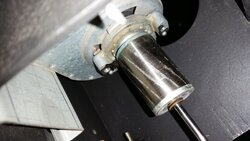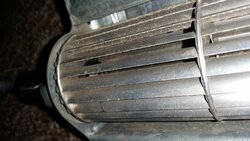I have an Austroflamm Integra free standing stove. The convection fan is making this ticking sound. I was hoping that it was the bearings at each end of the fan. I took the fan out and greased the bearings. Put it back together and it still makes the same sound.
When I had it apart I noticed that the round metal piece that runs through the fan motor had some scoring on it. Could this be it??
Any help would be greatly appreciated.
Thanks in advance
When I had it apart I noticed that the round metal piece that runs through the fan motor had some scoring on it. Could this be it??
Any help would be greatly appreciated.
Thanks in advance



